Baltic, 1945. The actions of the Soviet submarines
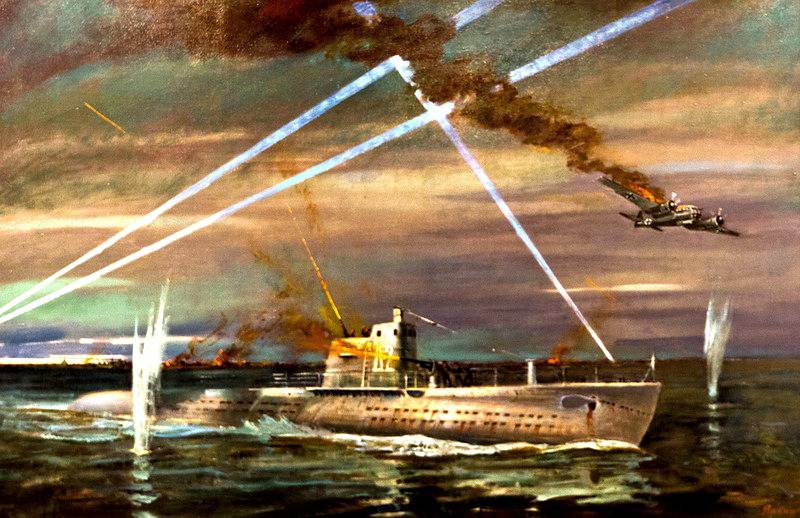
The withdrawal of our troops in 1944 to the Baltic Sea and the withdrawal of Finland from the war radically improved the position of the Red Banner Baltic fleet (CBF). He left the Gulf of Finland in the Baltic Sea. The German command tried its best to secure its sea shipping, the volume of which increased sharply, since the combat effectiveness of the Courland group, which turned out to be pressed to the sea, directly depended on them. In addition, it demanded all kinds of assistance from the ships to the ground forces, therefore, it strengthened the fleet in the Baltic Sea with the help of ships transferred from the North and Norwegian Seas.
By the beginning of the 1945 on the Baltic Sea, the Germans had a 2 battleship, 4 heavy and 4 light cruisers, more than two hundred submarines, over 30 destroyers and destroyers, about seven dozen torpedo boats, 64 minesweeper, almost two hundred landing craft and a significant number of patrol boats ships and boats.
Based on the current situation and the general plan of the offensive of the Red Army in the Eastern regions of Prussia and Pomerania, the Supreme Command headquarters set for the Red Banner Baltic Fleet in the 1945 campaign of the year the main task was to violate enemy sea communications. By the 1945 of the 20 submarines in the brigade of the Red Banner Baltic Fleet, six were deployed on enemy lines in the Baltic Sea.
Submarines were deployed in Kronstadt, Hanko, Helsinki and Turku. Combat control of them was carried out from the floating base "Irtysh", located in Helsinki. To ensure the interaction of submarine forces with aviation In Palanga, an external command post was created, which facilitated the exchange of information on the whereabouts of enemy convoys and command and control.
13 January 1945, the troops of the 3 of the Belorussian Front launched an offensive, giving rise to the East Prussian operation, and a day later the forces of the 2 of the Belorussian Front joined it. In early February, the forces of these fronts reached the Baltic Sea coast, as a result of which the East Prussian group was divided into 3 units: Heilsberg, Koenigsberg, and Zemland. All branches of the Red Banner Baltic Fleet forces participated in the liquidation of the Koenigsberg and Zemland groups along with the ground forces.
On the basis of the situation developing on the Baltic coast and in connection with the actions of the Soviet ground forces, Admiral V.F. Tributs set the tasks for the submarine brigade: to disrupt enemy communications in the southern and southwestern areas of the Baltic Sea, right up to the Bay of Pomerania, to interrupt the communications of the Courland group and to block the port of Libava together with the aviation forces. 6-8 submarines were to be at sea simultaneously. Those of them who operated in the area of the maritime flanks of our ground forces were supposed to fight the enemy warships in order to prevent them from firing on Soviet forces. They also had to carry out operational reconnaissance of approaches to the German bases of the Nazis in the southern part of the Baltic Sea, to lay mines on the routes of the enemy convoys.
To accomplish these tasks, the commander of the brigade, Rear Admiral S.B. Verkhovsky decided to deploy active submarines in enemy communications to deploy areas that were located on the approaches to Vindava and Libau, the trap of Danzig Bay and the Brewsterort lighthouse meridian.
It envisaged the interaction of submarines with aviation, which was to be expressed in the continuous mutual information of the BPL and Air Force headquarters about aviation reconnaissance data and changes in the areas of operations of the submarines, their exit to positions and return to the bases.
The submarines moved to the positions from the bases through the skerry fairways under the pilotage escorted by the escort ship, and with the appearance of ice - and the icebreaker. The submarine went to the dive point, as a rule, after sunset, followed a submerged position of at least 25 miles, after which the commander, having assessed the situation, himself chose the method of moving to the position. The main method of operation of the submarines was cruising in selected limited areas.
Timely data received by air reconnaissance on the movement of convoys made it possible for submarine commanders to correctly assess the situation in their area, make the necessary calculations, go on the course of the movement of enemy ships and launch attacks. So, using data from aerial reconnaissance, they entered the enemy convoy courses and attacked the Shch-303, Shch-309, Shch-310 transports, etc.
The battle account in 1945 was opened by the submarine Shch-310 of Captain 3 of the rank S.N. Bogorada. On the night of January 7, 1945, being on the surface, the submarine discovered a caravan of 3 transports guarded by ships and boats. The boat moved to the positional position. (The positional position of the sub-boat is the surface position of a differentiated boat that can be submerged at any moment. In this position, tanks of the main ballast are filled, and the medium tank and the tank of quick submersion are blown out. In a positional position, the submarine has the lowest seaworthiness, can go with extremely low speed and be on the surface of the sea with a wave not exceeding three points.)
Having reduced the distance to the 3,5 cable, “U-310” made a volley on the head vehicle with three torpedoes in a fan. Two torpedoes hit a vehicle that sank. 62 days operated "U-310" in difficult winter conditions. During this period, she passed 1210 miles in submerged and 3072 in surface and in position. The boat performed the task of reconnaissance well, revealed the anti-submarine defense system and methods of actions of the enemy sentry ships, which was valuable information for our boats, which were to go on military campaigns.
In January, our other submarines also operated successfully. The first, released in the sea in the new 1945 year, was the "U-307" captain 3 rank MS Kalinin. On January 4, she left the base and at midnight on January 7 took the position assigned to her on the way to Libava. In the evening of January 9 “U-307” lay on the ground, when the acoustics reported on the noise of the screws of the convoy ships. Coming up in a positional position, the commander discovered the lights of a large transport and escort ships. Having deployed a boat for attack with stern torpedo tubes, Kalinin from the 6 cable distance produced a two-torpedo salvo. Both torpedoes hit the transport, which quickly sank. For more than two hours, patrol ships were aggressively pursued by Shch-307, dropping 226 depth charges onto it; 70 of them exploded near.
Having fixed the damage, the boat continued to search for the enemy. At night, she searched, being in the surface position, during the day - under the periscope. In the evening of January 11 the boat was in a cruising position. The cruising position of the submarine is the surface position of the differentiated submarine, with a fast-dive tank filled with and empty main ballast tanks and a medium tank. In the cruising position, the submarine is capable of fast diving.
Soon the running lights of two transports and two patrol ships were seen from the submarine. Shch-307 began maneuvering to enter the torpedo attack. At this point, the escort ships noticed the boat, lit it with rockets and began to bypass from both sides. She had to turn on the countercourse and plunge. After making sure that the enemy stopped the pursuit, the commander decided to surface and continue the attack. “U-307” got close to the enemy and from the distance 5 the cable produced a three-torpedo salvo on the transport, which caught fire and sank.
The success was accompanied by other crews. For example, the submarine "K-51" captain 3 rank V.A. Drozdov, on January 28, attacked a transport vessel standing on the Rugenwaldemünde raid and sank it. February 4 in the area of Libau, submarine "U-318" captain 3 rank L. A. Loshkarev, despite the difficult weather conditions and strong opposition of anti-submarine defense ships, one enemy transport sank, and the second damaged.
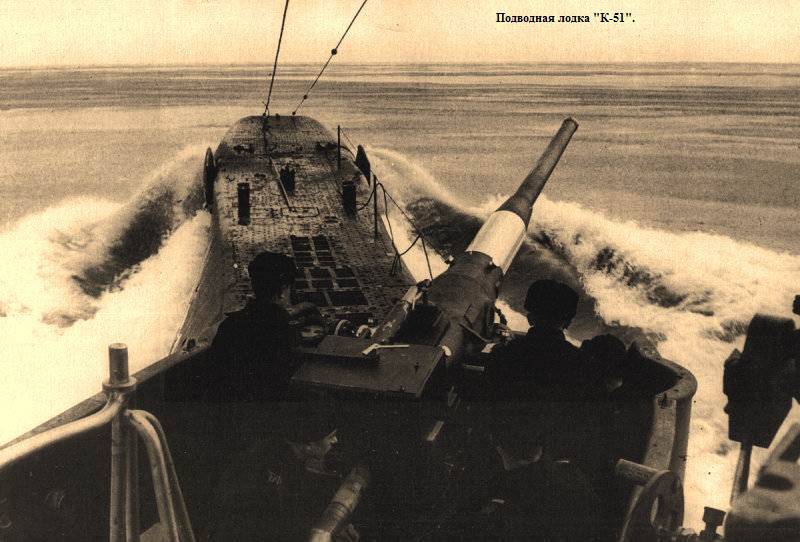
February 10 ground troops by the forces of the two Belarusian fronts launched the East Pomeranian operation. Our armies split the enemy group and at the beginning of March reached the Baltic Sea. In February and March, the German command was engaged in an intensive redeployment of troops from Courland to Danzig Bay and East Prussia. The movement of transports between Libau and Danzig Bay has increased significantly, in connection with which our submarine forces intensified their combat activities in the area.
So, February 18 left the base of the guards submarine "Sh-309" captain 3 rank PP Vetchinkin. February 23 morning, when the boat was maneuvering in a position near Libau, signalman foreman 1 articles by K. T. Alshanikov and sailor F.I. Korobko in moonlight (visibility was up to 15 cable) discovered a transport vessel, going to guard a pair of patrol ships. Having reduced the distance to 9 cable, “U-309” sank the transport with a three-curtain salvo. One of the escort ships opened artillery fire on the boat, and the other began pursuit. It lasted 5 hours. Bombs burst very close. As a result of 28 bombs explosions, the command periscope and some other devices were damaged. Despite this, the boat made a number of attacks, and then returned to base. February 24 in the Danzig Bay launched a transport vessel to the bottom and damaged the patrol ship of the K-52 submarine of Captain 3 of rank I.V. Travkina.
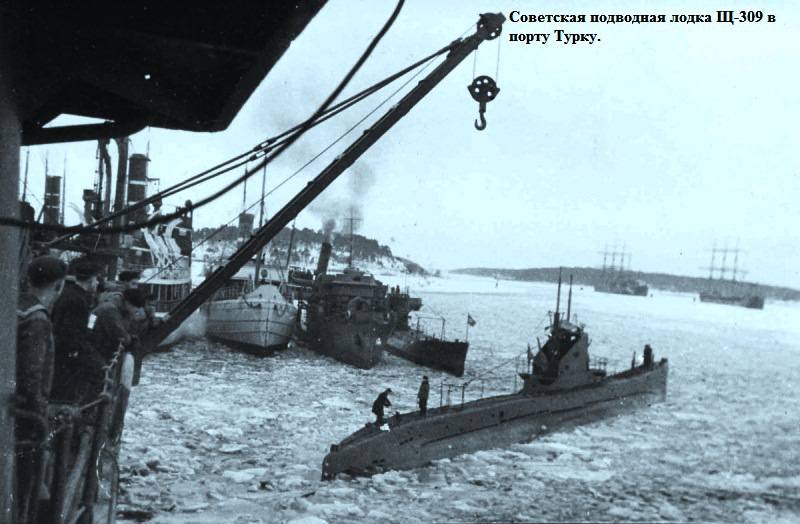
To combat the Soviet submarines and to ensure the safety of their naval communications, the Germans launched a reinforced patrol service with surface ships and submarines, and created special search and strike groups from ships equipped with sonar equipment. The main task of these groups was to destroy our boats or oust them from the area of movement of the convoy. To this end, the enemy made prophylactic bombing ahead in the course of following convoys. Having found the submarine, the escort ships for some time pursued it with the aim of driving it to the depth and giving the opportunity to go through the transports. At the same time, they called up search groups in the area of detection for the long pursuit of the boat. It could last up to two days, while the order dropped 200 depth charges.
In the southwestern part of the Baltic Sea area, the Germans used aircraft during daylight and on bright moonlit nights to search for our submarines, and when they found a boat using rockets or other means, surface ships were alerted to its location. In order to PLO enemy widely used submarines, masking, using acoustic ratchets, which did not give the opportunity to listen to the noise of the propellers of ships. To avoid encounters with our boats, the fascists made transitions at night or in poor visibility. And to impede the actions of our boats, the enemy transported in high-speed transports. The convoy included 2-3 vehicles, which were guarded by destroyers, patrol boats and boats.
However, the Soviet submariners continued to increase the power of their attacks. As a result of the withdrawal of Soviet troops to the southern shores of the Baltic Sea and the encirclement of the Koenigsberg and Danzig factions in March, the enemy began an intensive evacuation of troops, equipment and valuable property removed from the occupied territories to the West German ports. This caused the movement of transports from the ports of Danzig Bay to the ports of Pomerania. Therefore, the main part of our boats was deployed in this direction. The activity of submariners has become even more efficient.
So, March 1, in the afternoon, conducting a search in a submerged position, the K-52 boat detected the noise of the propeller of the transport vessel, but a large wave did not allow attacking it at the periscope depth. Then I.V. Travkin plunged the boat to a depth of the order of 20 m and decided to carry out an attack using data from hydroacoustic instruments. Due to the high skill of the commander and excellent training, the acoustics of the first Baltic-free attack on the Baltic were carried out successfully. Launching two more ships to the bottom and having spent all the torpedoes, the K-52 11 of March returned to the base.
The submarine “K-52” went out on April 17 on its next combat campaign, and it lasted until April 30. During this time, "K-52" sank 3 enemy transport, despite the strong opposition of the enemy. So, during the pursuit of April 21, patrol ships dropped 45 depth charges on it in 48 minutes. All day on April 24, the area where the boat was located, bombed the planes, dropping bombs around 170. In total, during the hike, the planes and ships launched bombs on K-52, 452 of them exploded at a distance of fifty to 54 meters. However, the commander skillfully maneuvering detached from the enemy. The crew skillfully fought for the survivability of their ship. The submarine safely returned to base.
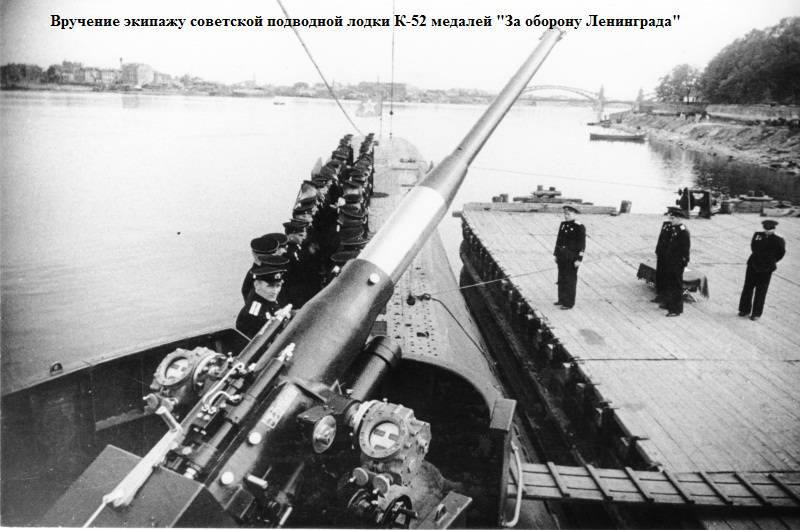
He boldly, calmly, resolutely acted, actively searching for enemy ships in the bay of Danzig, the commander of the underwater minzaga "L-2", Captain 2 of the rank of S. S. Mogilevsky. Using sonar equipment, he 6 once detected fascist convoys, five times brought the boat to attack. On the morning of March 25, when the boat was going at a depth of about 25 meters, the acoustics recorded the noise of the propellers of the ships and the operation of the sonars. The boat floated to periscope depth, and the commander saw a convoy of 6 transports, destroyers, and patrol ships. By reducing the distance to the 6,5 cable, the L-21 produced a three-shot volley at a transport vessel and sank it. It was the third victory of the minelayer in this campaign.
By the end of March, the Soviet troops completely cleared Eastern Pomerania from the fascists. Our connections were occupied by the ports of Gdynia and Danzig. In April, the Red Banner Baltic Fleet was tasked with assisting the Red Army in eliminating the German groups that were surrounded in the areas of Koenigsberg, Pillau (Baltiysk), Swinemünde and Hela. The positions of our submarines, which destroyed enemy ships and ships making sea crossings, moved to these areas. Having received a military order, March 23 left the base in the direction of the Danzig Bay Guards submarine "L-3" of the captain 3 of the welt V.K. Konovalov. She achieved great success on April 17. In 00 hour. 42 min. acoustics distinguished the noise of propellers of transport ships and patrol ships. The boat began to maneuver for a torpedo attack. To catch up with the convoy, the submarine had to go surfaced on diesel engines. In 23 hours of 48 minutes from the 8 cable distance, a three-torped volley “L-3” sank the ship “Goya”, which transported about 7000 people, among whom there were over a thousand German submariners, and most of the Wehrmacht soldiers. Recently it has become fashionable to present the death of the Goya as a crime of Soviet submariners, since there were a certain number of refugees among the military on board. At the same time, the authors of these statements completely ignore the fact that the sinking vessel could not be considered hospital or civil in any way. The transport went as part of a military convoy and had on board Wehrmacht and Crigsmarine soldiers. The vessel carried military camouflage paint, and also had anti-aircraft weapons on board. At the same time, there was no sign of the Red Cross, which uniquely excluded vessels from the objects to be attacked. Consequently, Goya was a legitimate target for the submariners of any country of the anti-Hitler coalition.
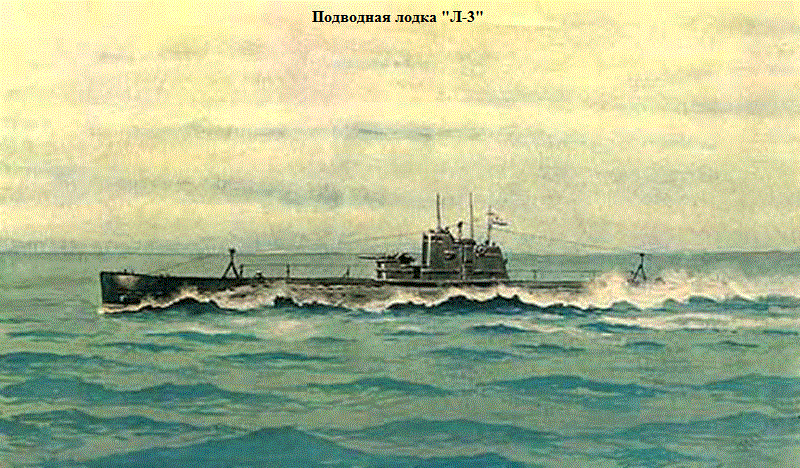
The March and April boat trips indicated that the German command had significantly increased the strength of the PLO. In some cases, the opposition of the enemy was so great that Soviet submarines had to stop the attack and leave the area of movement of the enemy convoy.
In addition to the torpedo weapons, boats used and mine. Thus, the submarine minzagi "L-3", "L-21" and "Lembit" put on the paths of movement of the German convoys and on the approaches to the German 72 bases mines. Approximate areas of mines were appointed by the brigade commander. The commanders of the boats put mines after the production of additional exploration and identification of the fairways of the enemy. Thus, the Lembit underwater minzag of the captain 2 of rank A.M. Matiyasevich 30 March put in the way of the enemy ships 5 cans, 4 mines in each. In April, these mines killed transport, two patrol ships and the enemy's PLO ship.
In addition to the violation of maritime communications, the Red Banner Baltic Fleet submarines resisted the shelling by enemy ships of our military units in the coastal region, conducted reconnaissance of enemy bases, places suitable for the landing of assault forces. For example, the submarine Shch-407 reconnoitered the landing place on about. Bornholm. Guards submarine "L-3", making a mine statement and a series of torpedo attacks at the approaches to Vindava in late January, 2 February, on the orders of the BPL commander, moved to the Brewsterort-Zarkau area to attack ships firing on our units on the Zemlanda plenum. February 4 submarine fired three torpedoes at a destroyer. After the attack "L-3" the enemy stopped the shelling of the Soviet troops. Also at this time, "L-3" put mines in the paths of the movement of the Nazi ships. March 10, by order of the fleet commander, in order to prevent shelling of the coastal flanks of the Soviet troops stationed on the Pomeranian coast, the submarine L-21 and the Guards Shch-303 were deployed in the bay of Danzig.
The success of the submarine warfare depended on the combat skills of the personnel. From submariners required excellent knowledge of the material, tactical and technical data of the ship, so the commanders paid great attention to combat training. The training of officers mainly consisted of the analysis of military campaigns with a detailed analysis of the actions of submariners. So, at the collection of the commanders of the mine-torpedo warhead submarines, passing from 1 to March 3, the successful torpedo attacks of the U-307, C-13, K-52, etc. submarines were analyzed. A similar gathering was conducted heads of groups, squad leaders, staff torpedists and miners, which contributed to the improvement of their skills, skillful actions during torpedo attacks and mine settings. Only from January to March 1945, in order to transfer combat experience, 14 classes were held with officers and foremen of electromechanical units. The commanders of submarines C-13, D-2, U-310, U-303, and others gave reports on them.
In 1945, the intensity of the work of mechanisms compared with 1944, has increased significantly. For example, the L-3 submarine passed 1945 miles in three months of the 3756,8 of the year, and only 1738 miles went through the entire previous year; The C-13 submarine for the 1944 year passed 6013,6 miles, and in one 1945 campaign of the year - 5229,5 miles. In addition, mainly in night attacks and the search for the enemy in the surface position increased the load on diesel engines.
Despite the increased tension in the work of the mechanisms, there were no failures due to the fault of the personnel, and when damage appeared, the submariners quickly removed them on their own. So, the “U-307” failed the coupling-bamag. Sergeants N. I. Tanin, A. P. Druzhinin and V. N. Sukharev put it into operation in 12 hours. A similar malfunction in 16 watches was eliminated by foremen A.I. Dubkov and P.P. Shur on “U-310”. In the factory, according to the technical standards for this work, 40 hours were assigned.
For four months 1945, the Red Banner Baltic Fleet submersibles sank 26 transports. On the mines exposed under boats, 6 of the German ships and 3 of transport were blown up. The Nazis lost 16 submarines that were involved in the PLO. Our losses in the 1945 year were one submarine - the C-4, which died in the area of Danzig Bay. The actions of the underwater forces of the Red Banner Baltic Fleet contributed to the success of the ground forces in the Baltic States, East Prussia and Eastern Pomerania.
Sources:
Achkasov V., Basov A., Sumin A. The Battle Path of the Soviet Navy. M .: Voenizdat, 1988. C. 318-324.
Achkasov V., Pavlovich N. Soviet naval art in the Great Patriotic War. M .: Voenizdat, 1973. C. 302-321.
Yemelyanov L. Soviet submarines in the Great Patriotic War. M .: Voenizdat, 1981. With 48-67.
Morozov M. Submarines of the Soviet Navy in the Great Patriotic War 1941-1945 Chronicle of military campaigns. Part of 1. Red Banner Baltic Fleet. M .: Polygon, 2003. C. 3-94.
Chirva E. Submarine war in the Baltic. 1939-1945 M .: Yauza, Eksmo, 2009. C. 18-34, 127-146.
Sparrow V. Fighting submarines of the Red Banner Baltic Fleet // VIZH. 1971. No.1. C. 31-39.
Zolotarev V. Kozlov I. Three centuries of the Russian fleet. 1941-1945. SPb .: Polygon Publishing House LLC, 2005. C.112-119.
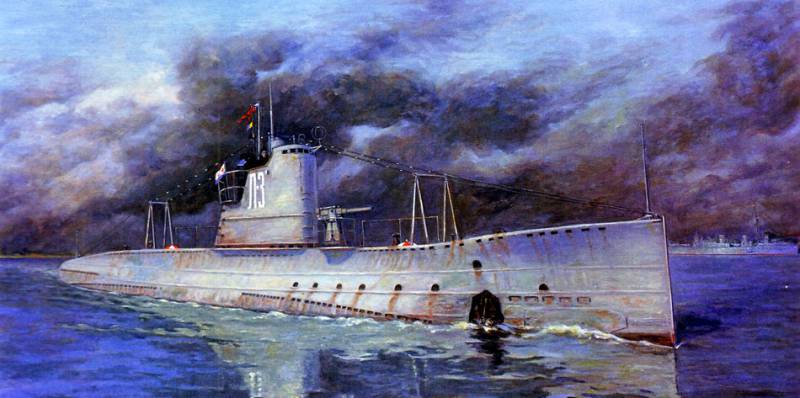
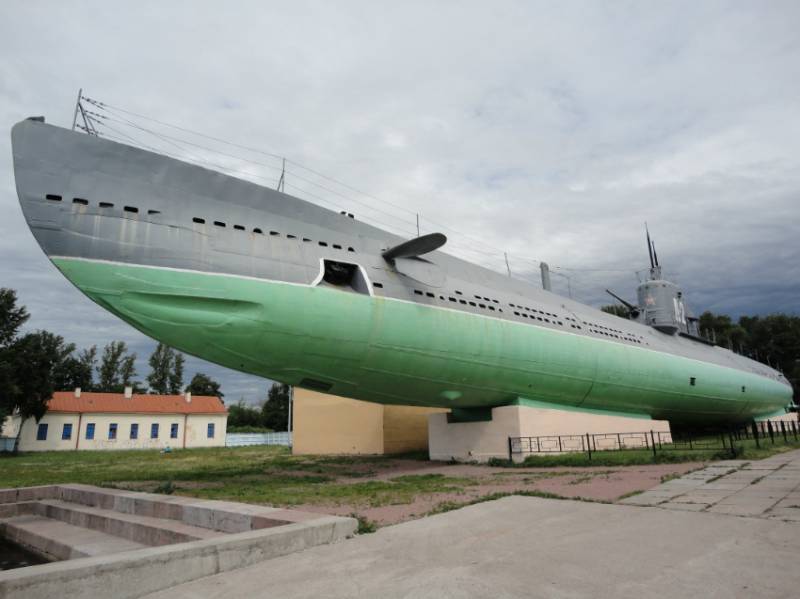
Information